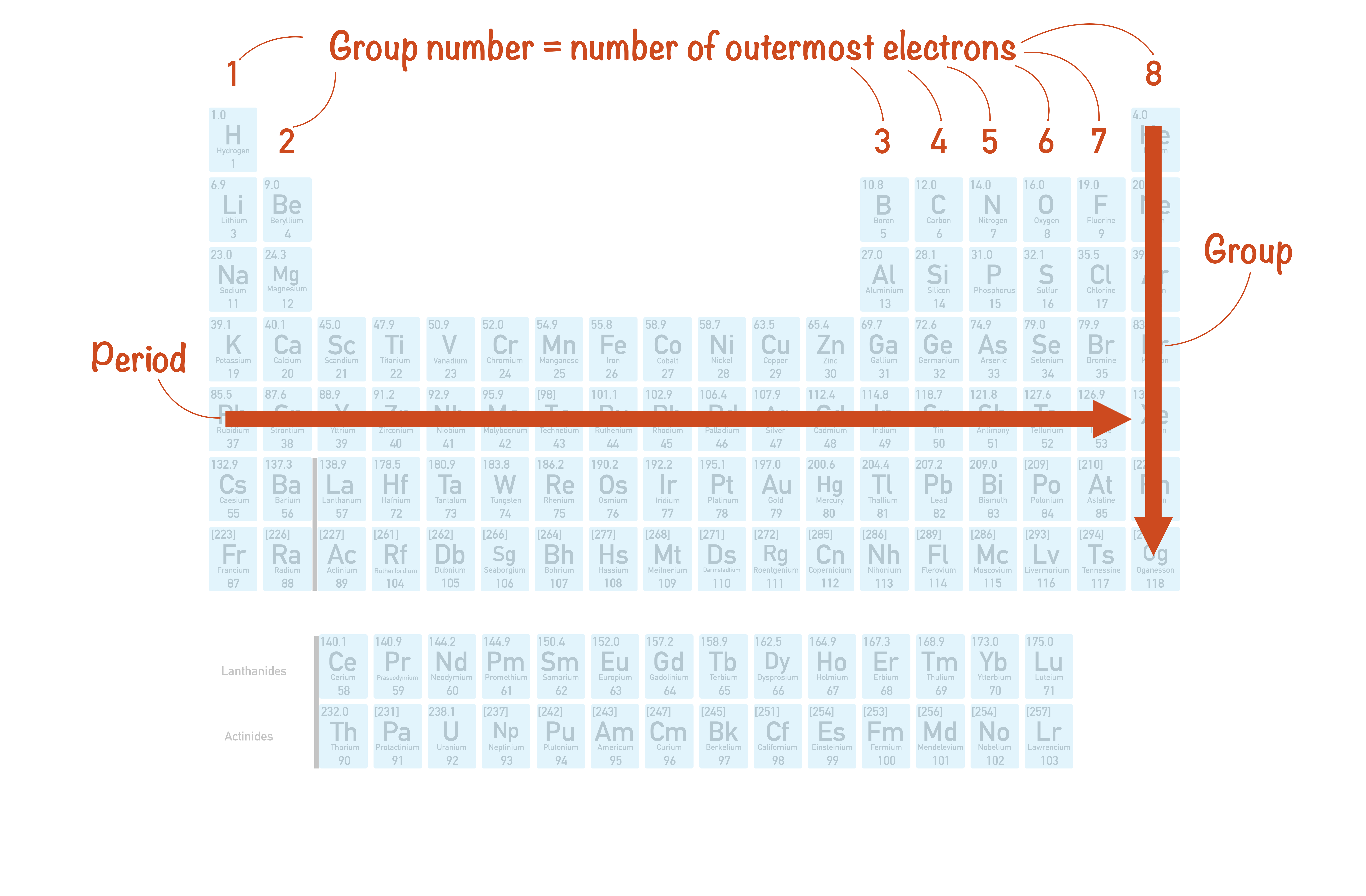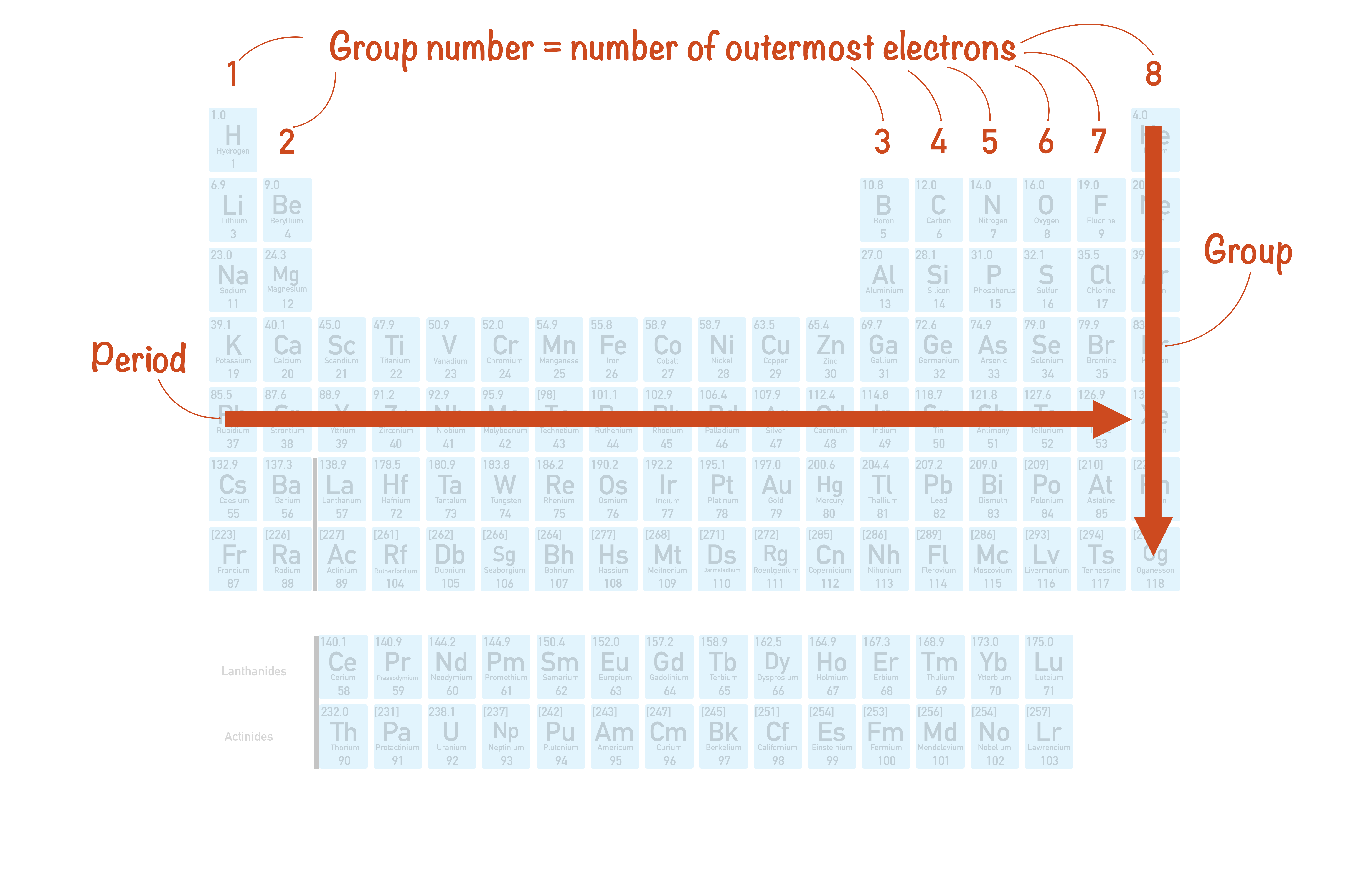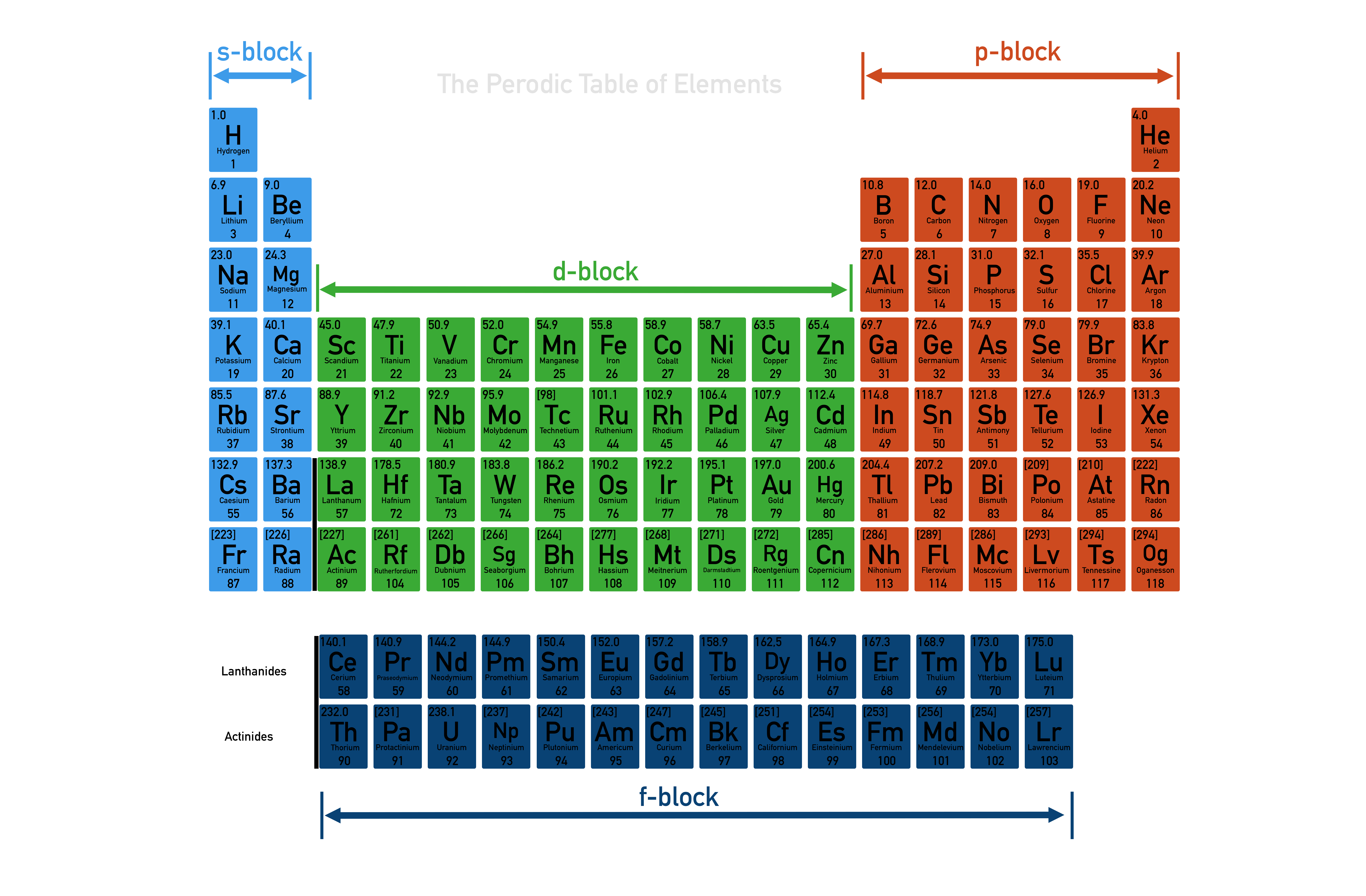Quick Notes The Periodic Table
- The periodic table is an arrangement of elements in rows and columns, based on their atomic numbers.
- Each column is called a group.
- Groups show the number of electrons in the outer shell of an element.
- Each row is called a period.
- All elements in one period have same number of electron shells.

- The s, p and d blocks refer to the type of electron orbital that the outermost electrons are in for an element.
Full Notes The Periodic Table
The periodic table is a fundamental tool used by chemists (and chemistry students!) all over the world. Elements are arranged based on their atomic number (number of protons and electrons).
The periodic table is a visual way of organising all elements. Certain characteristics of an element can be predicted based on its place in the periodic table.
For s and p-block elements (see below), atoms can only have eight electrons in their outermost electron shell (octet rule). How an atom reacts is partially linked to how many electrons are in its outer shell (valence number). As a result, atoms with the same number of electrons in their outer shells behave in similar ways.
There are only eight possibilities for the number of outermost electrons for s and p-block elements, these are shown as ‘groups’ in the periodic table. All the elements in a particular group have the same number of outer electrons (valency).

There are only eight groups in the periodic table. Once an element has a full outer shell the element that follows next (in the order of number of protons) must be a group 1 element, so a new row in the table is formed. Each row in the periodic table is called a period.
It’s not just the number of outermost electrons that can be different between elements, but also the type of orbital that the electrons exist in. As we move across a period in the table, we are adding a proton (and an electron) to each element. This means we fill the orbitals as follows for period 3: (See Electron Configurations).

The type of orbital that the outermost electron exists in is known as the element’s ‘block’ within the periodic table.

